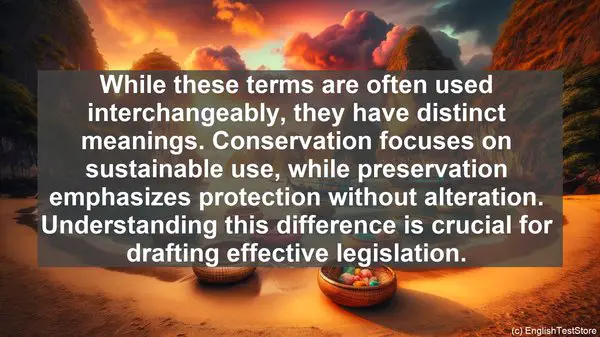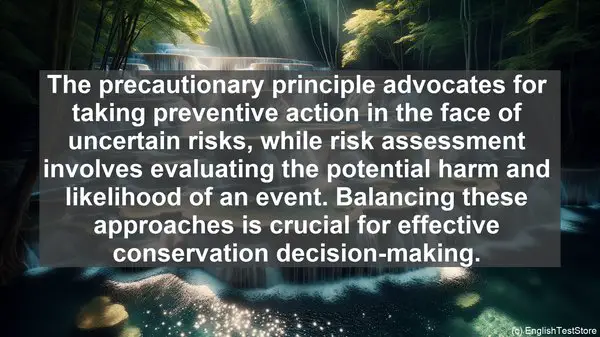Introduction: The Importance of Language in Conservation Law
When it comes to conservation law, every word matters. A slight misinterpretation can have significant consequences. Today, we’ll explore the top 10 words that often cause confusion. Let’s dive in!
1. Conservation vs. Preservation
While these terms are often used interchangeably, they have distinct meanings. Conservation focuses on sustainable use, while preservation emphasizes protection without alteration. Understanding this difference is crucial for drafting effective legislation.
2. Endangered vs. Threatened
Both terms refer to species at risk, but ‘endangered’ signifies a higher risk of extinction, while ‘threatened’ indicates a lower risk. This distinction determines the level of protection and conservation efforts required.
3. Mitigation vs. Remediation
In the context of environmental damage, mitigation aims to prevent or minimize harm, while remediation focuses on restoring the affected area. These strategies play a vital role in addressing ecological disruptions.
4. Easement vs. Covenant
Both are legal mechanisms to restrict land use, but an easement grants specific rights, such as access, while a covenant imposes obligations, like maintaining a certain ecological standard. Choosing the appropriate instrument is essential for achieving conservation goals.

5. Exclusive vs. Non-Exclusive License
When granting permission to use intellectual property, an exclusive license gives sole rights to the licensee, while a non-exclusive license allows multiple parties to use it. The choice between these licenses can impact the dissemination of conservation-related knowledge.

6. Zoning vs. Districting
Zoning involves dividing an area into different zones with specific land use regulations, while districting focuses on preserving the historical, cultural, or architectural character of an area. Both tools are essential for balancing development and conservation interests.
7. Invasive vs. Non-Native Species
While all invasive species are non-native, not all non-native species are invasive. Invasive species pose a significant threat to ecosystems, often outcompeting native species. Identifying and managing them is crucial for maintaining biodiversity.
8. Ex Situ vs. In Situ Conservation
Ex situ conservation involves preserving species outside their natural habitat, such as in zoos or seed banks, while in situ conservation focuses on protecting species within their native ecosystems. Both approaches are vital for safeguarding biodiversity.
9. Stewardship vs. Ownership
In conservation, stewardship refers to the responsible management and protection of natural resources, regardless of ownership. Recognizing this distinction is essential for collaborative conservation efforts involving multiple stakeholders.
10. Precautionary Principle vs. Risk Assessment
The precautionary principle advocates for taking preventive action in the face of uncertain risks, while risk assessment involves evaluating the potential harm and likelihood of an event. Balancing these approaches is crucial for effective conservation decision-making.
